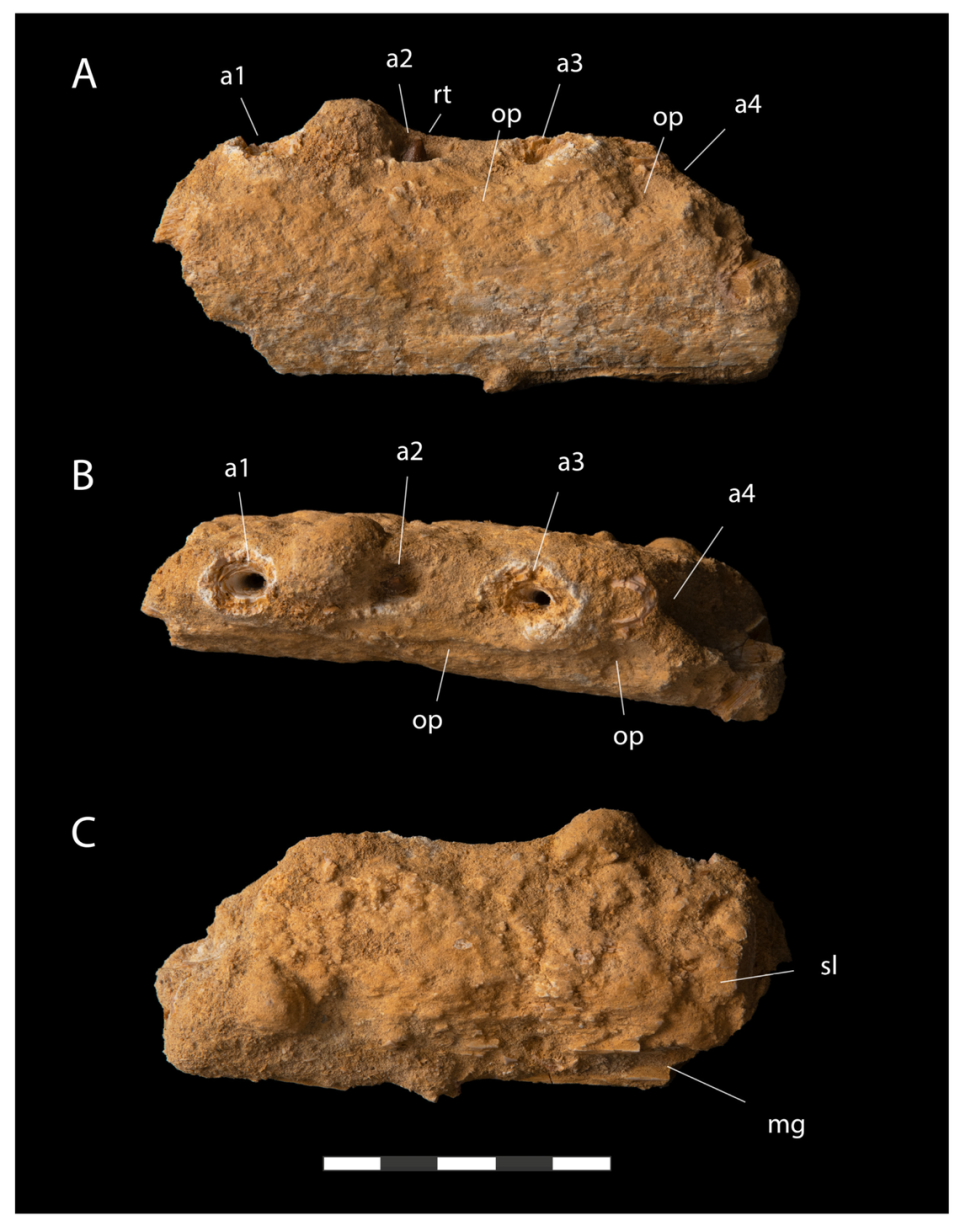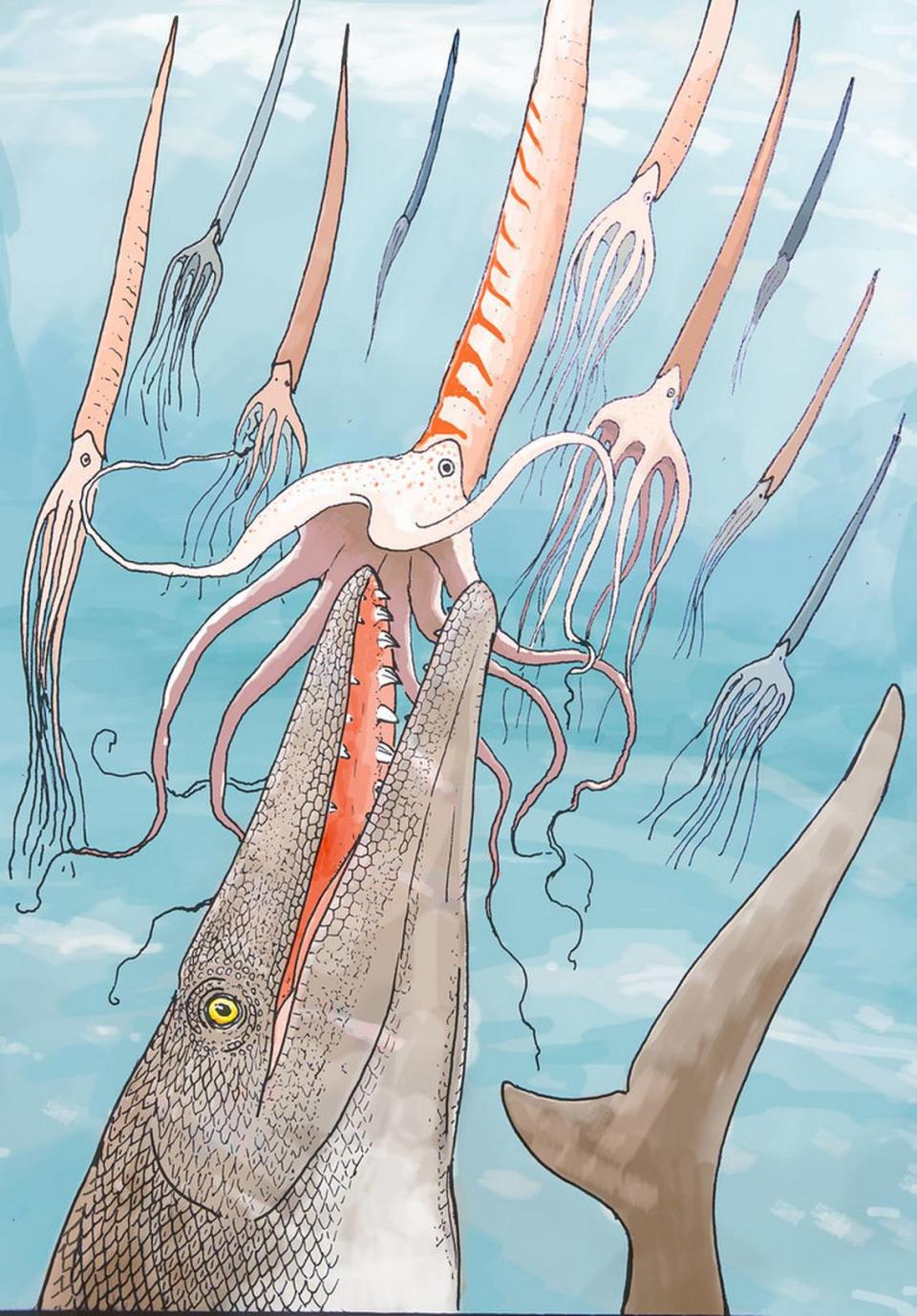‘Screwdriver’-shaped teeth led scientists to new species of ancient lizard in Morocco
Scientists exploring a fossil deposit in Morocco uncovered some “peculiar” teeth shaped like the head of a “screwdriver.” The teeth led them to an “extremely rare” ancient marine lizard.
The fossil deposit of the Oulad Abdoun basin in Morocco is part of a “large belt of sedimentary rocks” rich in ancient life, according to a study published May 17 in the journal Fossils.
While searching a 66 million-year-old section of the deposit, researchers uncovered a jaw fragment with the tip of a tooth still embedded and two other teeth, the University of Bath in the United Kingdom said in a news release.
“The teeth look like the tip of a Phillips-head screwdriver, or maybe a hex wrench,” lead co-author Nicholas Longrich told the university.
The study said, “The tooth shape does not closely resemble any known species.”
Based on the geological context of the find and comparative analysis, researchers identified the fossils as a new “unusual” species of mosasaur, according to the study.
Mosasaurs are a group of ancient sea-dwelling lizards, researchers said. One subgroup, known as Mosasauridae, have teeth so unique that the animals can be identified to the genus “and sometimes to the species level” by teeth alone.
The new animal, Stelladens mysteriosus, was identified as a Mosasaurid, the study said.

Researchers named the new genus Stelladens, meaning “star-tooth” in Latin. The species name, mysteriosus, means “mystery” in Latin after “the mysterious structure of the teeth,” the study said.
The animal’s unusual teeth led researchers to ask, “what’s it eating? Phillips head screws? IKEA furniture? Who knows,” Longritch told the university.
Stelladens mysteriosus may have eaten an “unusual fish or unusual cephalopods,” crustaceans, shrimp, lobster or “thin-shelled ammonites,” researchers said. Alternatively or simultaneously, the lizard might have had “a specialized prey-capture strategy.”

Still, “Stelladens is a very weird, surprising creature, and extremely rare,” Longrich wrote in a blog post.
Based on comparative estimates of other fossils, researchers estimated that Stelladens mysteriosus may have been about 16 feet long, the study said. The animal’s body shape and behavior are still unknown.
“I’ve worked on the mosasaurs of Morocco for more than 20 years,” co-author Nathalie Bardet told the university, “and I’d never seen anything like this before — I was both perplexed and amazed!”
“Evolution isn’t always predictable,” Longrich told the university. “Sometimes it goes off in a unique direction, and something evolves that’s never been seen before, and then it never evolves again.”
The Oulad Abdoun basin is about 90 miles south of Rabat.
‘Dancing’ creature emerges after rainfall — and discovered as new species in Thailand
‘Uncommon’ creature — with ‘groins of fire’ — discovered as new species in Peru
‘Calm’ creature burrowing underground discovered as new species in India, study says

